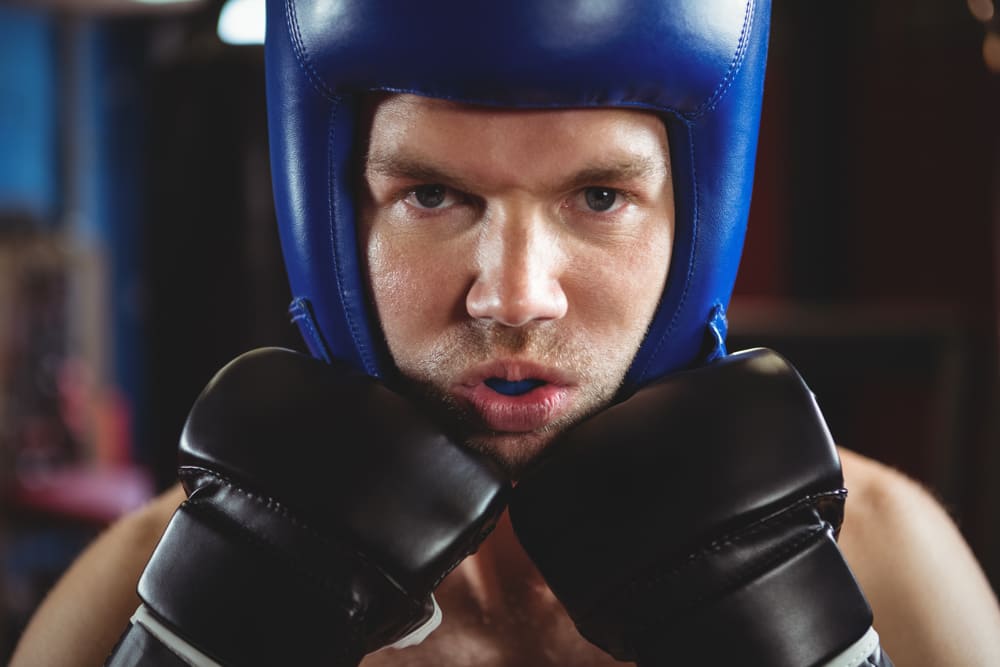How to Choose the Right Sports Mouthguard?

Mouthguards play a crucial role in safeguarding your teeth, lips, and gums from injuries while engaging in sports activities. There are options when it comes to select a suitable sports mouthguard, including boil and bite or custom-fitted models. This comprehensive guide will provide you with insights on how to make the choice, for your needs.
Table of Contents
Breathing and Speaking
Mouthguards should never interfere with your ability to breathe or speak. If you find yourself feeling short of breath while wearing a mouthguard it could be a sign that it’s too tight or has some issue that makes it uncomfortable for you to wear.
A good mouthguard should be comfortable and not overly tight after prolonged use during activities like football. If you experience jaw discomfort from clenching your teeth, to keep the guard in place or feel any pressure against your cheekbones chances are the fit isn’t quite right for you yet. This may also mean that this particular brand requires time to break in and become easier and more effective in protecting against injuries during intense sports activities like fast-paced basketball games on court floors.
Understanding Mouthguard Materials
There are different materials that are used in sports mouthguards and the choice of material depends on factors such as the sport you play your age and your comfort preferences. The used materials include acrylic (plastic) thermoplastic and silicone.
Sports mouthguards widely use Acrylic. Because it is easy to shape and cost-effective as compare to other options. If you’re looking for a material that’s more durable than acrylic. And doesn’t want to invest in a custom-fitted guard then thermoplastic might be the right choice for you. It offers improved protection against impact injuries. Compared to store-bought guards without requiring any fitting or moulding process like silicone does. This makes thermoplastic mouthguards a favorite.
Silicone mouthguards provide shock absorption and offer good comfort during use due to their softness. However, they may not last long as types of mouthguards before needing replacement. Additionally, silicone mouthguards may not be ideal for players since it can be challenging or even impossible for parents or coaches to properly fit them without damaging their shape. This could result in replacements being necessary.
Durability
Durability must be a consideration while searching for a mouth guard. It’s crucial to buy the sports mouthguard that withstand the season demands without breaking the bank.
Mouth guards made of two materials; rubber and plastic. Rubber is more resilient than plastic as it can endure impacts before showing signs of wear and tear. However, it is slightly heavier. May feel less comfortable in your mouth compared to other options. If you’re someone who tends to be rough on sports equipment or simply want the assurance that your mouthguard won’t fall apart after one game (or just one play), opting for a rubber model might be the wisest decision in terms of long-term savings. When you get MyMofoSmile’s sports mouthguard, you’ll discover a solution that excels in durability, ensuring it can handle the rigors of your sports activities while providing optimal protection.
On the other hand, if durability isn’t a concern for you there’s no real need to look beyond an affordable plastic alternative.
Age and Sport
The type of mouthguard you choose will vary depending on your age and the sport you play. For children, it is recommended to use soft moulded sports mouthguards as they offer better comfort compared to hard plastic or metal ones although they may not provide as much protection. As for kids and adults thicker and harder plastic guards are recommended for protection. These guards can be worn for periods without causing any discomfort or pain in the jaw joints. Additionally, adults who grind their teeth at night (unconsciously) may consider using fitted dental appliances known as night guards.
Comfort and Fit
Comfort is the factor when choosing a mouthguard. If it doesn’t feel good chances are you won’t wear it. It should allow breathing and effortless conversation. The mouthguard should stay in place during talking or chewing and be easily removable if necessary, like if someone tries to pull it out.
To ensure your sports mouthguard fits properly, carefully follow the instructions provided by the manufacturer when first putting it on. You can also check the fit by biting down on some gauze. If there’s any space between your teeth and gums or gaps between teeth those areas will require padding until they’re completely covered by the gauze before wearing any sports equipment over them. However, keep in mind that despite this precaution there may still be some areas where air could pass through.
If all else fails, seek advice from someone experienced in this matter before attempting yourself.
Level of Protection
The degree of protection offered by a mouthguard depends on its thickness. Generally, thicker mouthguards provide better protection. However, there are some drawbacks to consider: Thicker mouthguards can make it harder to breathe. May be less comfortable in comparison.
Certain sports demand proper airflow through the mouth for communication during play, like basketball. If you find it difficult to breathe while wearing a sports mouthguard it might not be suitable for you.
